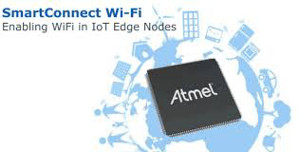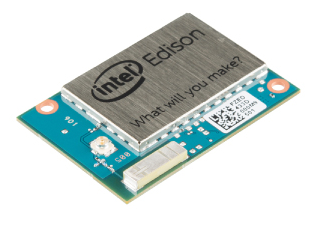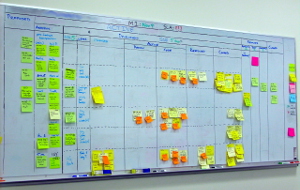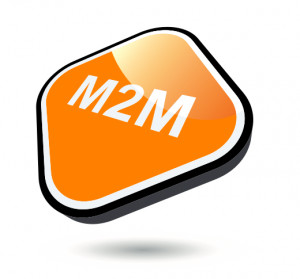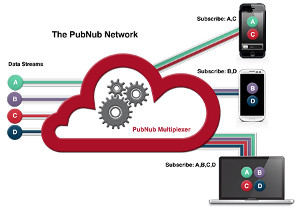Bug Labs’ cloud-based Swarm platform is an Internet-of-Things development platform that lets you easily add new Internet-connected services to your existing design or product.
Whether it’s a simple sensor device or a complex industrial system, Swarm provides everything you need to get your product up and running quickly with the new value that Internet-of-Things services can add, helping you to innovate in the rapidly growing IoT market.
Swarm abstracts the raw functionalities, such as sensors, actuators or transceivers, that any hardware device is equipped with and exposes these hardware functions as web services, allowing simple drag-and-drop creation of applications that interact with a diverse range of hardware capabilities.
The system is based around “resources”, which are applications or devices that are configured to produce or consume data over Swarm. A resource may be a physical device such as a smartphone, tablet, an embedded hardware platform or a microcontroller equipped with a Wi-Fi or Ethernet chipset for network connectivity, or it could be a mobile or Web application.
Anything that can communicate through HTTP can be configured to join a swarm and begin producing and consuming data, and Swarm makes it easy to acquire data from or to control connected devices over the Internet or local network using JavaScript or plain HTTP requests.
Resources are organised into collections referred to as swarms. Once a swarm of resources has been created, users may configure it to allow their own resources to participate as well as invite another user’s resources to become members. The owner of the swarm can control what level of access (data production, consumption, or both) each resource in the swarm has.
Once multiple resources have been grouped together as members of a swarm, a resource can communicate and share data with other resources in that swarm. You can easily control the level of access that a resource has to the data within a swarm, and grant a resource permission to produce data, consume data generated by other devices in the swarm, or both.
You can invite another user’s resources into your swarms and accept invitations to place your resources in somebody else’s swarms, making it possible to share your devices and your data with others easily and securely to the extent that you choose to.
Swarm’s RESTful configuration API makes it easy to create resources and swarms and to add resources to swarms as data producers, consumers or both. Once your resources are configured, the Participation API makes it easy to get your resources interacting with the swarms they are members of, and begin producing and consuming data.
Swarm Dashboard is a “homepage” for your device, which provides a fast way to get up, and running with Internet-of-Things value added to your connected product. A dashboard provides secure, real-time, visual access to all the important features and data your device offers, creating a high level, easy-to-understand yet powerful way for your users and customers to experience your device online.
You can choose from hundreds of colourful pre-built graphs, charts, gauges, tables and text displays to design and build your dashboard, all from an easy-to-use graphical interface, which does not require advanced programming expertise to set up. All the elements of your Swarm dashboards are optimised for the best viewing experience on different customer’s devices – smartphone, tablet or PC.
A Swarm Dashboard is just the starting point for the construction of additional applications that can enhance your customers’ experience with your product, because every dashboard is powered by Swarm’s APIs that can be used to build extended dashboards and more complex applications, incorporating services such as event notifications and alerts, real-time visualisations, analytics and reporting, historical activity logs, compliance testing and integration into your existing customer relationship management or enterprise resource planning systems.

Developing applications for embedded computing hardware and other types of connected Internet-of-Things devices can be a complex effort which requires specialised tools and skills because the application code needs to run on the device itself, which is usually a constrained operating environment with limited memory and resources.
But what if you could run the application code elsewhere, in the cloud, and access the device over a network connection? Then you’d be able to write mobile and web-based applications with easier-to-use tools and languages such as JavaScript and Python, without worrying about resource constraints on the embedded device so much, and Swarm helps you to do exactly that.
Swarm lets you write applications using standard web development tools which can then run anywhere you like, whether it’s your PC, your browser, or a cloud-based application server. Swarm coordinates the communications between your application and the connected device via any IP network connection – via Wi-Fi, cellular, satellite or Ethernet networking hardware – securely and reliably in real time.
All this is made possible by intelligently converting hardware-specific I/O interfaces into a collection of easily understood and addressed RESTful Web APIs. Bug Labs’ dedicated Swarm developer portal provides more information for developers on Swarm, its architecture and its open-source code and APIs.
As another option for your existing or new IoT-enabled project, our experienced award-winning engineering team can harness Swarm for your success. Getting started is easy – join us for an obligation-free and confidential discussion about your ideas and how we can help bring them to life – click here to contact us, or telephone 1800 810 124.
LX is an award-winning electronics design company based in Sydney, Australia. LX services include full turnkey design, electronics, hardware, software and firmware design. LX specialises in embedded systems and wireless technologies design.
Published by LX Pty Ltd for itself and the LX Group of companies, including LX Design House, LX Solutions and LX Consulting, LX Innovations.



